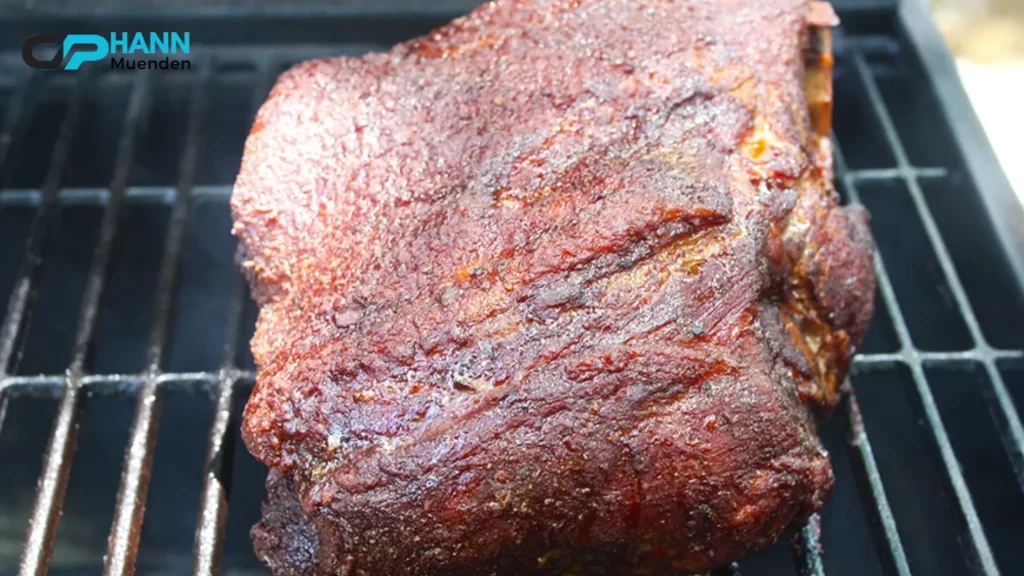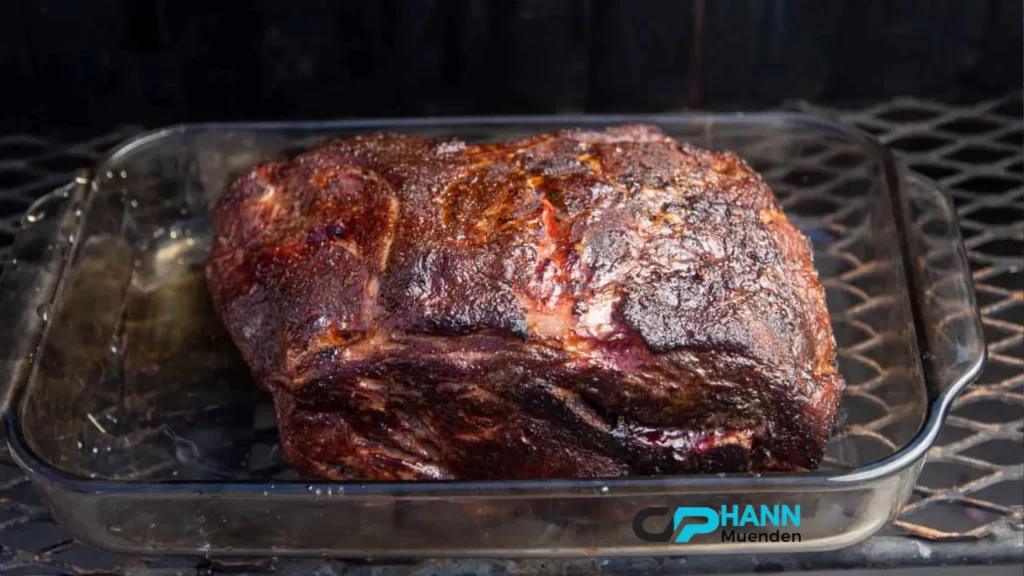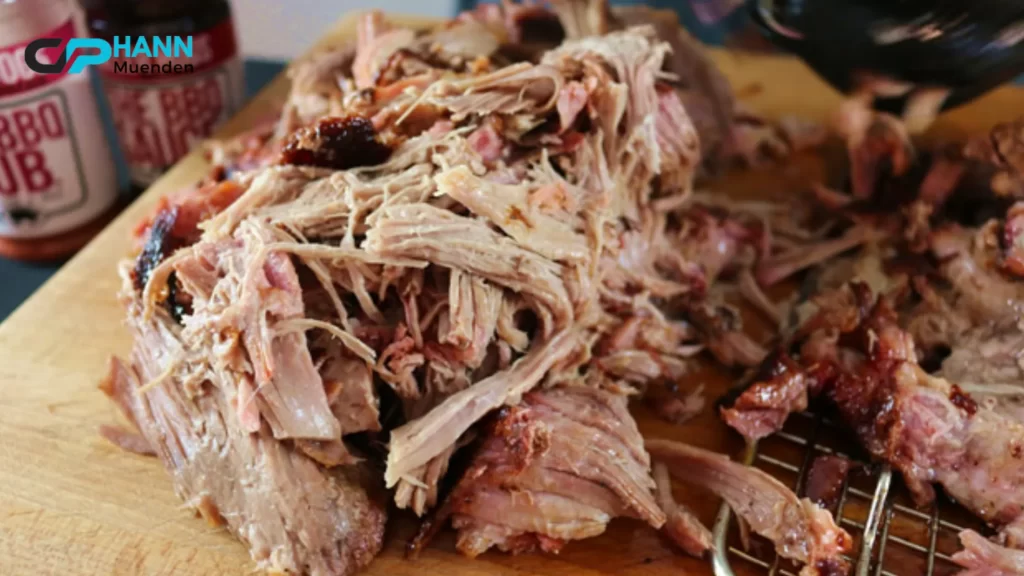How Long to Smoke a Pork Butt: Expert Tips

Table of Contents
Smoking a pork butt is one of the most rewarding and flavorful cooking techniques in BBQ. Achieving that perfect balance of smoky, tender, and juicy meat can elevate your culinary skills and impress family and friends at any gathering. But one question remains: How long to smoke a pork butt? Knowing the right smoking time is crucial to getting the melt-in-your-mouth results that every BBQ enthusiast craves. This article will cover everything you need to know, including cooking times, tips, and methods to make sure your pork butt turns out perfectly every time.
What Is a Pork Butt?

To get the best results, it’s important to understand the cut of meat you’re working with. Despite its name, a pork butt is not from the rear of the pig. Instead, it comes from the upper part of the shoulder. This cut is also referred to as a “Boston butt.” It has a good amount of fat marbling and connective tissue, making it ideal for slow cooking techniques like smoking. As the fat and collagen break down during the cooking process, the meat becomes tender, flavorful, and moist.
Pork Butt vs. Pork Shoulder
Pork butt is often confused with pork shoulder, but they are slightly different. Both cuts come from the shoulder area, but the butt is thicker, more uniform in shape, and contains more fat, which is why it’s preferred for smoking. Pork shoulder, on the other hand, has less fat and tends to be used in dishes like pulled pork or carnitas when you want a leaner cut.
Also Read: Dollar Tree Food Coloring: Uncover Bold Hacks for Vibrant Creations
Why Smoke a Pork Butt?

Smoking a pork butt offers a unique flavor that can’t be achieved through other cooking methods. The slow cooking process allows the meat to absorb the smoky flavor while tenderizing the pork until it can be easily shredded. This makes it perfect for pulled pork sandwiches, tacos, or even as a main dish for any BBQ event.
Benefits of Smoking
- Enhanced Flavor: The low, slow heat allows the wood smoke to penetrate the meat, adding depth and richness to its flavor.
- Tenderization: The connective tissues in pork butt break down during long cooking periods, resulting in meat that is fork-tender and juicy.
- Versatility: Once smoked, pork butt can be used in a wide range of dishes, from sandwiches to salads, and even tacos. Its flavor pairs well with sauces and slaws, making it a versatile meat for many recipes.
Preparing Your Pork Butt for Smoking

Trimming the Fat
Before seasoning your pork butt, it’s a good idea to trim excess fat. While some fat is necessary to keep the meat juicy and flavorful during smoking, too much can prevent the smoke and seasoning from penetrating the meat. Aim to leave a thin layer of fat, around ¼ inch thick, which will render down and help keep the meat moist throughout the smoking process.
Seasoning the Pork Butt
Proper seasoning is essential to developing the flavor of your smoked pork butt. A basic dry rub consisting of salt, pepper, garlic powder, onion powder, paprika, and a touch of brown sugar will enhance the natural flavors of the pork. Be generous with your seasoning, and don’t forget to rub it into every crevice to ensure full coverage.
For those who want a more intense flavor, you can also consider marinating the pork butt overnight or injecting it with a mixture of apple juice, vinegar, and spices to infuse the inside of the meat with even more flavor.
Letting the Meat Rest Before Smoking
After seasoning your pork butt, let it rest at room temperature for about 30 minutes before placing it in the smoker. This helps the meat cook more evenly and allows the rub to better adhere to the surface.
Choosing Your Wood
The type of wood you use to smoke your pork butt can have a big impact on the flavor. Here are some popular options:
- Hickory: Offers a robust, smokey taste that goes nicely with pork.
- Applewood: Offers a sweeter, milder smoke that enhances the natural flavors of the pork without overpowering them.
- Oak: A versatile wood that gives a moderate smoky flavor without being too intense.
- Cherry: Adds a slight sweetness and a rich, dark color to the meat.
You can also mix woods to create a unique flavor profile that suits your taste preferences.
Also Read: Seafood in Spanish: Unveil the Ocean’s Hidden Delights
How Long to Smoke a Pork Butt: Key Factors
Smoking a pork butt is a time-intensive process, but the results are well worth the wait. The length of time it takes to smoke a pork butt depends on several factors.
General Rule of Thumb
The general rule for smoking pork butt is to cook it at a low temperature of 225°F (107°C) for 1.5 to 2 hours per pound. So, if you’re smoking an 8-pound pork butt, you can expect the process to take anywhere from 12 to 16 hours.
Key Factors That Affect Smoking Time
- Meat Size: Larger cuts take longer to smoke. Always account for the weight of the pork butt when planning your cook time.
- Smoker Temperature: Maintaining a steady smoker temperature is crucial. If your smoker fluctuates too much, the cooking time may increase or decrease unpredictably.
- Wrapping: Wrapping your pork butt during the stall (more on this below) can reduce the total cooking time by speeding up the process.
Understanding The “Stall”
One of the most frustrating parts of smoking a pork butt is something called “the stall.” This occurs when the internal temperature of the meat hits around 160°F (71°C) and stays there for several hours, seemingly without rising. The stall happens because moisture is evaporating from the surface of the meat, which cools it down and slows the cooking process.
You can either wait out the stall or use a method called the “Texas Crutch,” where you wrap the pork butt in foil or butcher paper when it hits the stall temperature. This traps moisture inside, allowing the pork to cook faster and bypass the stall.
How to Know When Pork Butt is Done
The most accurate way to determine if your pork butt is done is by using a meat thermometer. Pork butt is fully cooked when the internal temperature reaches between 195°F and 205°F (90°C to 96°C). At this point, the collagen and connective tissues have broken down, and the meat will be easy to shred.
Should You Wrap Your Pork Butt?
Wrapping is an optional technique that can help manage cooking time and keep the meat moist. Many BBQ enthusiasts choose to wrap their pork butt once it hits the stall at around 160°F (71°C). Using foil or butcher paper helps retain moisture and speeds up the cooking process, but it can also slightly reduce the amount of smoke flavor absorbed by the meat.
When to Wrap
Wrap the pork butt when it reaches an internal temperature of around 160°F to 170°F (71°C to 76°C), usually after 4-6 hours of smoking. Once wrapped, continue smoking until the pork reaches an internal temperature of 195°F to 205°F (90°C to 96°C).
Resting and Shredding Your Pork Butt
Why Resting Is Important
Once your pork butt reaches the desired internal temperature, it’s important to let it rest for at least 30 to 60 minutes before shredding. Resting allows the juices to redistribute throughout the meat, making it more tender and flavorful. To rest your pork butt, wrap it in foil and place it in a cooler with towels or simply let it sit at room temperature.
Shredding the Pork
After resting, you can easily shred the pork using two forks or meat claws. The meat should be so tender that it pulls apart effortlessly. Be sure to discard any large chunks of fat that didn’t render down during the cooking process.
Shredded pork butt is incredibly versatile. You can serve it with BBQ sauce on buns for pulled pork sandwiches, toss it into tacos, or use it in a variety of other dishes.
Expert Tips for Perfectly Smoked Pork Butt
Here are a few extra tips to help you achieve smoked pork butt perfection:
- Use a water pan: Place a water pan in the smoker to help maintain moisture levels and keep the meat from drying out during the long smoking process.
- Monitor your smoker’s temperature closely: Fluctuating temperatures can lead to uneven cooking. Consider using a digital smoker with a built-in thermometer to maintain a consistent temperature.
- Don’t rush it: Low and slow is the key to smoking pork butt. While it may be tempting to turn up the heat to speed up the process, doing so will result in tougher, less flavorful meat.
Also Read: How Long to Smoke a Pork Butt: Expert Tips
Common Mistakes to Avoid When Smoking Pork Butt
- Skipping the thermometer: Relying on time alone can lead to undercooked or overcooked pork. Always use a meat thermometer to ensure accuracy.
- Not letting the meat rest: Skipping the resting phase can lead to dry pork. Letting the meat rest for 30 minutes to an hour ensures the juices redistribute.
- Opening the smoker too frequently: Each time you open the smoker, you lose valuable heat and smoke. Resist the urge to peek too often, and trust the process.


